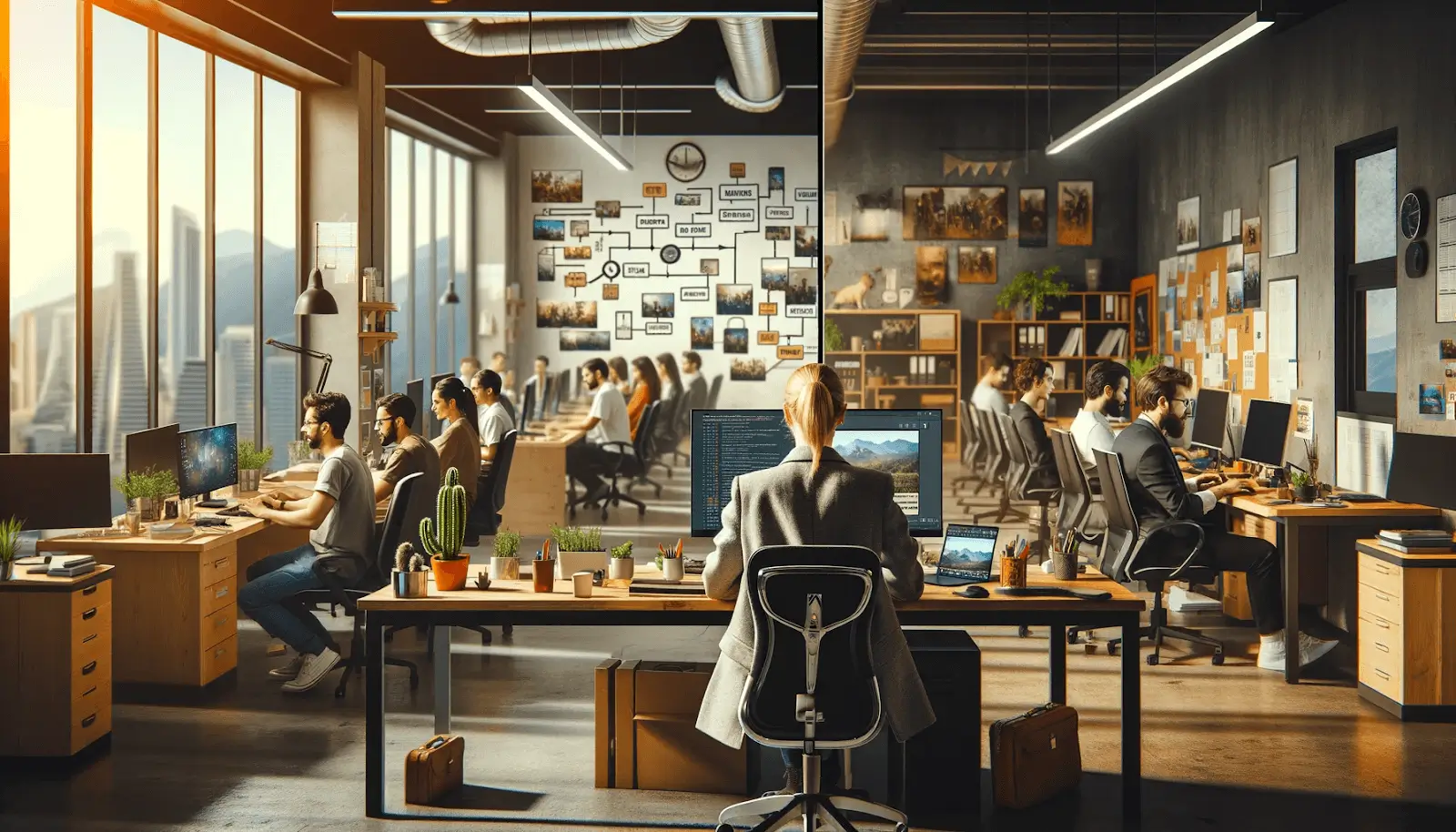Game Art Outsourcing: Tips for Choosing the Perfect Team
Outsourcing has become a cornerstone in the game development industry, offering a gateway for game developers to access specialized talent, trim costs, and concentrate on their core strengths. Among the various outsourcing facets, game art outsourcing stands out as a crucial component that can significantly impact the overall success of a game. From character design to environment creation and interface development, outsourcing art tasks can streamline the game development process. When choosing an outsourced team for game art, several considerations and models can influence a successful collaboration.¬
What is Usually Delegated
Game art outsourcing covers a spectrum of creative tasks essential for a game’s visual appeal and functionality. Some key components often delegated to external teams include:¬
Character Design
Game artists play a pivotal role in crafting diverse and engaging characters suitable for different game genres. Their expertise in character animations enhances player immersion and engagement.
Environment Design
Creating immersive and captivating backgrounds is crucial in setting the tone and atmosphere for games, be it realistic or fantastical settings.
Game Elements Design
Unique art assets are essential to complete the visual puzzle of a game. Art studios generate these elements to elevate the game’s overall aesthetic appeal.
Game Interface Design
User interfaces, menus, and HUD elements are integral for player engagement. Outsourcing these components ensures a visually enticing and user-friendly gaming experience.
What Does the Ideal Outsourced Team Look Like

To ensure a successful collaboration with an outsourced game art team, consider the following criteria:
Experience
Seek a team with a well-established history in game art. Their experience serves as a valuable indicator of their ability to effectively fulfill your requirements.
Reputation
Check the team’s industry reputation. Positive reviews, references, and a strong portfolio are indicators of a reliable team.
Staff of Professionals
The ideal team should consist of various professionals who can contribute their expertise to your project. For instance, Stepico Studio has the following structure, which comprises:
- Art Director:is responsible for defining the atmosphere and trajectory of upcoming video game projects in alignment with the client’s specifications.
- Concept Artist:the paramount task of the concept artist is to produce top-tier sketches (concept art) that bring to life the key elements of the video game, meticulously crafted based on the client’s descriptions and briefs.
- Leading 2D/3D Artists:ensure the team’s artwork matches the Art Director’s vision. They guide and support fellow 2D\3D artists to meet the project’s technical and creative demands with top-quality work.
- 2D\3D Artists: each an expert in various art styles, ranging from the intricacies of photo-realistic and realistic designs to the vibrant world of stylized art.
- Technical Artist:the role of this expert is to fine-tune illustrations, specifically digital files, ensuring their seamless performance across diverse technical environments. ss.
How to –°ollaborate With an Outsourced Team
There are several collaboration models to consider when we speak about game art outsourcing :
Task-Oriented Approach
Pros:
Clarity and specificity: Clearly defined tasks mean a clear understanding of what needs to be done.
Efficiency: It’s efficient for repetitive or straightforward tasks that don’t require constant monitoring.
Ease of management: Requires less direct involvement as tasks are specified, reducing the need for continuous oversight.
Cons:
Limited flexibility: If there are changes or unexpected needs, it might be challenging to adapt without renegotiating.
Possibility of misinterpretation: Clear task lists might not cover all potential scenarios or contingencies, leading to misunderstandings or missed requirements.
Dependence on initial task briefing: If the task list is not comprehensive, it might lead to unsatisfactory results.
Hourly-Based Payment Model
Pros:
Adaptability: Offers flexibility to make changes or iterations in the project as it progresses.
Transparent billing: Payment is based on actual hours worked, providing clarity in terms of cost and effort.
Continuous monitoring and communication: Regular updates are essential, leading to improved communication and progress tracking.
Cons:
Potential for increased costs: If the project scope isn’t well-defined or there are inefficiencies, costs can escalate.
Over-reliance on hours: Quality might be compromised if the focus is primarily on the number of hours worked rather than the output.
Communication challenges: Regular updates and communication are crucial. Without it, misalignment or misunderstandings might occur.
Direct Team Management
Pros:
Control and oversight: Full control over the team and the project’s progress.
Customization and personalization: Tailoring the team to specific project needs and processes.
Quick decision-making: Immediate responses and changes can be made without external negotiations.
Cons:
Resource allocation: Requires significant time and effort for managing resources, personnel, and project details.
High involvement: Requires active engagement, potentially diverting focus from other core tasks.
Dependency on in-house expertise: The success of this model heavily relies on the buyer’s management capabilities.
Can an Outsourced Team Make a Turnkey Game?
Not every game art outsourcing team can deliver a turnkey game, but some, like Stepico, possess the capabilities. Turnkey game development involves creating a complete game, from conception to execution, catering to private clients, businesses seeking promotional games, or online gamers looking to monetize their creations. Stepico, for instance, can handle partial tasks or the entire game development process, showcasing their comprehensive skill set in the field.
When opting for game art outsourcing, choosing the right team demands careful consideration of their experience, reputation, and the alignment of their expertise with your project needs. Collaboration models should be picked based on the project scope and communication requirements. With the proper team and effective collaboration, game art outsourcing can significantly contribute to the success of a game development venture.

